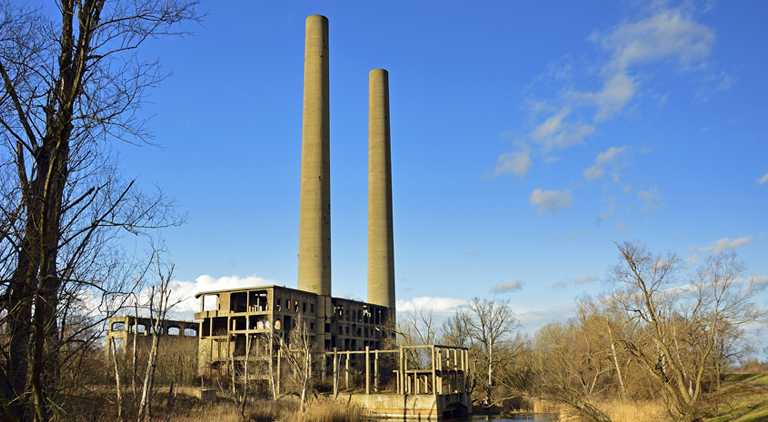An optimistic outlook towards digitalisation of grid
By EPR Magazine Editorial January 7, 2021 11:15 am IST
By EPR Magazine Editorial January 7, 2021 11:15 am IST

2020 has been an unprecedented year that released massive unpredictability into the power sector. Power demand had weakened and DISCOM health turned even more delicate.
Delay in project execution led to a hefty inventory buildup across the value chain. Businesses had to re-conceptualise ways to keep their people safe, ensure business continuity and adapt a rapidly evolving situation to restore demand. It seemed we had to take one day at a time and commit to making the right decisions that helped India build back better when return to normalcy.
In hindsight, however, the year brought out the best in us. A culture of innovation ensured we, as a company could rebound as soon as possible. We made digital technology our ally to see the future will be heavily dependent on it. Work culture and business processes, from boardroom to the field will be handled on a single interconnected platform, mandating an upgrade in the entire power infrastructure without ado. We are unsure about the next crisis and how will be like.
In the recent years, India has made considerable strides in the power and energy sector. It has improved markedly through the creation of a single national power system and major investments in renewable capacity. It is now experiencing higher shares of variable renewable energy as well. Given the hardships unleashed by the pandemic, the government put its weight behind the power sector with a massive stimulus package and various incentives and initiatives for connected segments such as EVs and green energy.
“We look forward to its persistent efforts in creating an enabling climate in which technology-enabled infrastructure can flourish. We hope to see a greater focus on grid digitalization, energy efficiency, transport electrification besides system integration and interconnections. We are deeply encouraged and are confident of India’s fundamental growth drivers and progress toward a carbon-neutral future in which electricity forms the backbone of the entire energy system”, says N Venu, Managing Director – India, Head – South Asia, Hitachi ABB Power Grids.
Detailed observations
Renewable energy and e-mobility transition
The pandemic has accelerated the energy transition and the electric vehicle revolution taking place in India. We saw the government recently revise the renewable energy target to an even more ambitious 220 GW by 2022 from 175 GW. To understand the magnitude, we can imagine about 660 million PV panels, 22 billion LED bulbs and over 9000 utility-scale wind turbines. That is a huge market to tap into to create jobs, generate economic momentum and reduce our carbon footprint.
We also witnessed a 20 percent jump in EV adoption in 2019-20, central and state governments are further incentivising buying, and auto manufacturers going ahead with their earmarked investments and continuing to plan rollouts. But to achieve the 30 percent EV adoption target by the end of the decade, the vital thrust to operationalise a nationwide network of accessible charging infrastructure remained largely amiss, more so in the public transport space.
Wave of data centersHowever, the question we should be asking is are we prepared for a data center wave? The amount of energy data centers consume is enormous and can have a major impact on the electric grid. Ours is the largest synchronous grid in the world that is aging as well, and data centers can significantly increase grid load, risking its stability. Besides, while continually improving economics of renewables can lead to further data center expansion, we need to better prepare ourselves to handle the new and hybrid load from multiple points. In that, the power sector itself needs to deploy data to gain insights into their asset’s health and performance. So there are no stumbles and misfires, we should use data to help in load balancing and grid robustness.
Power transmission and distribution
The path toward carbon-neutrality has one common denominator: it will be built on much more electrification. Industry, transport, infrastructure and common households will come to rely heavily on the grid which will integrate an ever-increasing share of DERs. We have undertaken massive nation-building projects such the 800kV Raigarh Pugalur transmission link that will facilitate large amounts of renewable energy to the high consumption centers. But we cannot fathom a deluge of hybrid demand without grid modernisation and digitalisation. To improve DISCOM performance, to make existing schemes more fruitful and the transition to clean energy sustainable, digitalization is crucial. Besides, there is also no alternative to upgrading the power transmission and distribution infrastructure to improve energy efficiency.
The volume of data that utilities produce continues to grow. Much of it is in silos or being warehoused. That approach has to transition to more liquid, inter-connected, interactive and intelligent digital solutions to gain real-time insights into equipment health and performance, bring down DISCOM losses, cut downtime and reduce our carbon footprint.
Outlook
The Covid-19 crisis has highlighted the importance of smart technologies, smart businesses, smart leaders, and smart policies to deliver meaningful change and important solutions. Business as usual is no longer an option. Clamor is getting louder for businesses and government to do better, do more. We must make better use of our existing infrastructure, tap into new energy sources by transitioning to nature-positive solutions and usher in a stakeholder economy where everyone has a role to play.
There should be a leveled playing field for all market players and the power sector to grow. Abrupt decisions that affect the supply chain can nip growth in its nascency. We therefore need to encourage cross-industry, cross-boundary partnerships that enable exchange of ideas and technologies and facilitate India to discover its true potential. As Hitachi ABB Power Grids, we are committed to building local capabilities and resources to ensure a sustainable energy future.
We use cookies to personalize your experience. By continuing to visit this website you agree to our Terms & Conditions, Privacy Policy and Cookie Policy.